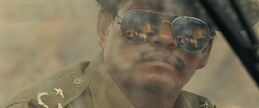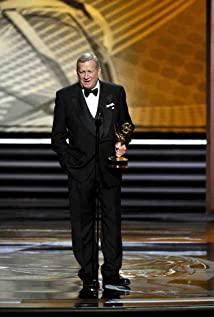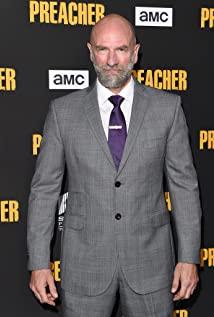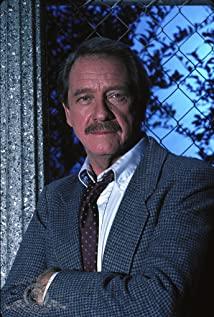When the "First Blood" series was most prosperous, Rambo's war experience in Vietnam and Afghanistan seemed to male audiences to be an excellent science education film about conventional warfare, weapon knowledge, special operations, and Cold War armaments. This is also Stallone's unique where the charm lies. 30 years later, the advent of a new era also represents Mr. Stallone's old age. This is the creation of time, which can make everything or forget everything. The cultural orientation and commercial atmosphere of the film have transformed Rambo from an anti-government violent hero to a helpless government fan, which is obviously the span from the first to the second and third films. Where can Rambo go back? As a product of the times, Stallone, who is over sixty years old, must seek a balance. Just like Rambo's taciturnity, "First Blood 4" in silence is closer to the original intention of Rambo, a classic character, in terms of entertainment style and humanistic connotation.
In this episode, the 62-year-old Stallone clearly recognizes and implements the principle of silence is gold. In the face of radical humanists and extreme brutal soldiers, he is usually silent. This silence is even more flavorful and angular than the previous work. . Moreover, the reason for the final rescue is for a weak but kind intellectual woman. This pretense is very funny, injecting a sense of rationality into the time-changing Rambo, making morality great. In contrast, the woman's radical boyfriend is on the verge of collapse in the face of bloody violence. "First Blood 4" shows Rambo's heroism in a small space, but it is more subtle, and it can completely make the past action heroes and outdated genre movies complete and develop according to the taste of the times. In essence, this should be attributed to the old Stallone's experience and experience. Having sunk into oblivion in the Hollywood entertainment industry, he must have picked up the tiring work that this apparently young man is supposed to do for nostalgia and the damn business factor. The quality and appearance of the Fourth Drop of Blood are good, and the connotation of the film is obviously acceptable and successful.
Rambo was originally an invincible god of war. He instantly killed countless enemies on a small boat and could be used as a special forces skill. He devised strategies in the forest to improve the quality of Kong Wu's powerful Rambo, and finally defended the air and ground with a 12.7mm machine gun. The opening and closing of the show is actually a catharsis of violent emotions. These mixed flavors of IQ and EQ strongly mask Stallone's age, diminishing the fact that the action hero is aging. The reason why these bridges are close to reasonable is due to the strong violence index and war realism of the film.
Since it is entertainment, and the performance of the lone hero Rambo is reappearing, it is inevitable for Stallone to be worried. But still hot and spicy, Stallone smartly avoided the cruel reality and made people feel retro and new. The important thing is that Stallone directly imprinted the positioning of B-level movies for the violence index of the film, and a large number of close-ups of flesh and blood are extra stimulating to the eye in the realistic style. To a certain extent, the violent scenes of the film abandon the freehand approach and are closer to reshaping reality. This kind of change according to local conditions is very advanced with the times.
Almost all action shots are based on real-life situations. Although the war pattern, space, and heavyweight are extremely small, everything in the hand-to-hand encounter is very real and cruel. The lethality of the old-fashioned classic large-caliber machine gun used by Rambo is indeed true at close range. The amount of ammunition delivered per minute covers a hillside tightly like raindrops, tearing the body like a child's play, don't marvel at the exaggerated drama of the torn apart, the actual combat effect That's it, one should marvel at the power of Rambo's single-handedly wielding a super-heavy, unwieldy weapon and the arm strength to avoid recoil.
Stallone's attachment to heavy firearms is to show a unique war scene for the film to express the affirmative answer of whether he can eat or not. But some of the details are open to question: the Barrett anti-material special rifle used by snipers is designed to deal with heavy armor and can penetrate the composite armor of the tank, which is extremely powerful. But this guy has no use value in the jungle. As a prominent headshot weapon in the film, it is indeed exciting, but it is terribly unrealistic. Which team member who enters the jungle to fight will choose an impractical big guy unrealistically. Before shooting You have to find a force-bearing object to keep it stable.
The greatest value of "First Blood 4" lies in the extremely realistic and violent war scenes. Although there are some scribbled quick cuts and quick turns, it is still useful. This long-lost war action film does not have the skills of showing off the old Stallone. It cleverly makes the signature classic conform to the characteristics of the times and deepens the original character connotation. It is just exaggerated to let Rambo return to his hometown in the United States, but it is a bit rash. But thinking about it from another angle, Ye Luo is understandable under the premise of the war on terror, and he is an American citizen after all. But it is so compromised, maybe it can only be said that it is for the sake of continuing the sequel. Or, it's really possible that Volkswagen will never see a Rambo again. If so, I choose the latter, at least Stallone, the helpless violent hero, has finally found his home, and it has also made an era for the classic movies that have influenced a generation.
View more about Rambo reviews











